In the python genius, the ball pythons are one of the smaller-size species which tells us why many reptile hobbyists love to own them as pets. Over the years this specie has ranked as the most popular pet snakes especially in the United States and Europe.
They usually measure between 4-6 foot once they grow to adulthood. Thus, it makes them very easy to handle. As a beginner, if you are considering getting a ball python as a pet snake, you’ll need to know a few things about its morphs.
This article will give you detailed information about one of the morphs called “Queen Bees”.
Contents
What Is A Ball Python Queen Bee?
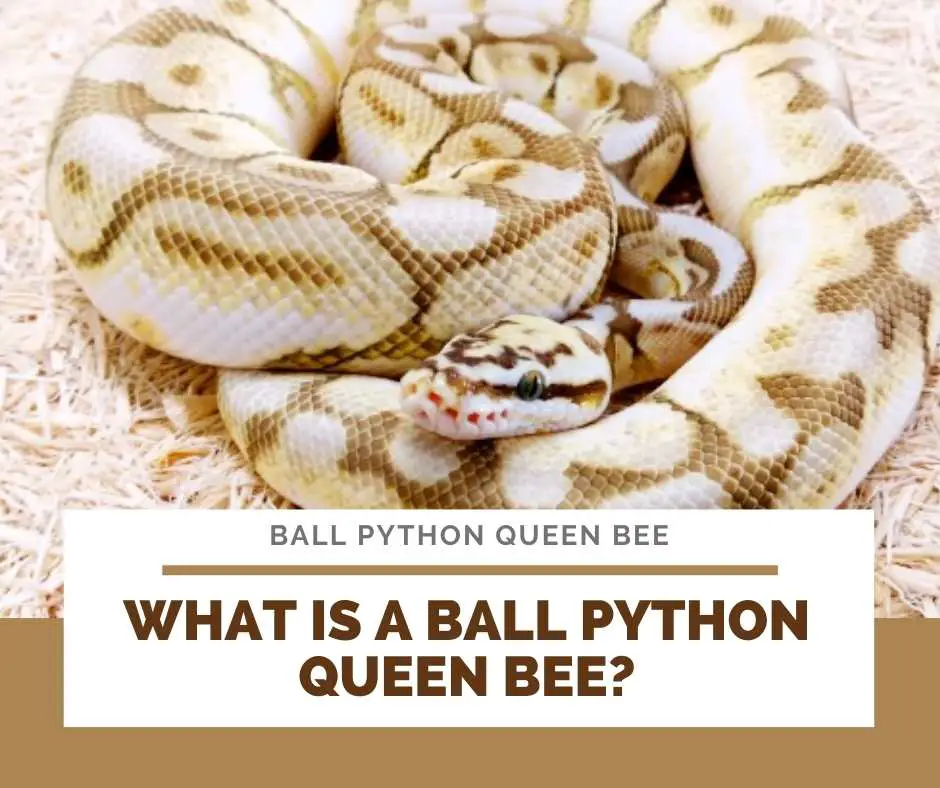
(Image Source: Daylitor Knight Tao YouTube)
The queen bee ball python is a designer combination of three co-dominant genes. The pastel gene, the spider, and the lesser platinum genes. By “designer”, it means that it is a result of deliberate and careful cross-breeding.
The queen bee morph is one of the most beautiful and attractive ball python morphs. Since queen bees and bumblebees have the same line of genes, they both have a close resemblance. But on a closer look, you can spot the difference.
Being a result of cross-breeding three co-dominant genes, the queen bee ball python has a faded, light-brown pattern with a white and yellow body. At birth, there is no yellow coloration on the body.
The yellow body coloration starts appearing as the snake gets older. Along the head, it has a faded pattern with soft, blue-gray eyes.
In the ball python morph market, queen bees are among the most sought after morphs because of their unique color, pattern, and good disposition.
The Identification Guide For Ball Python Queen Bee
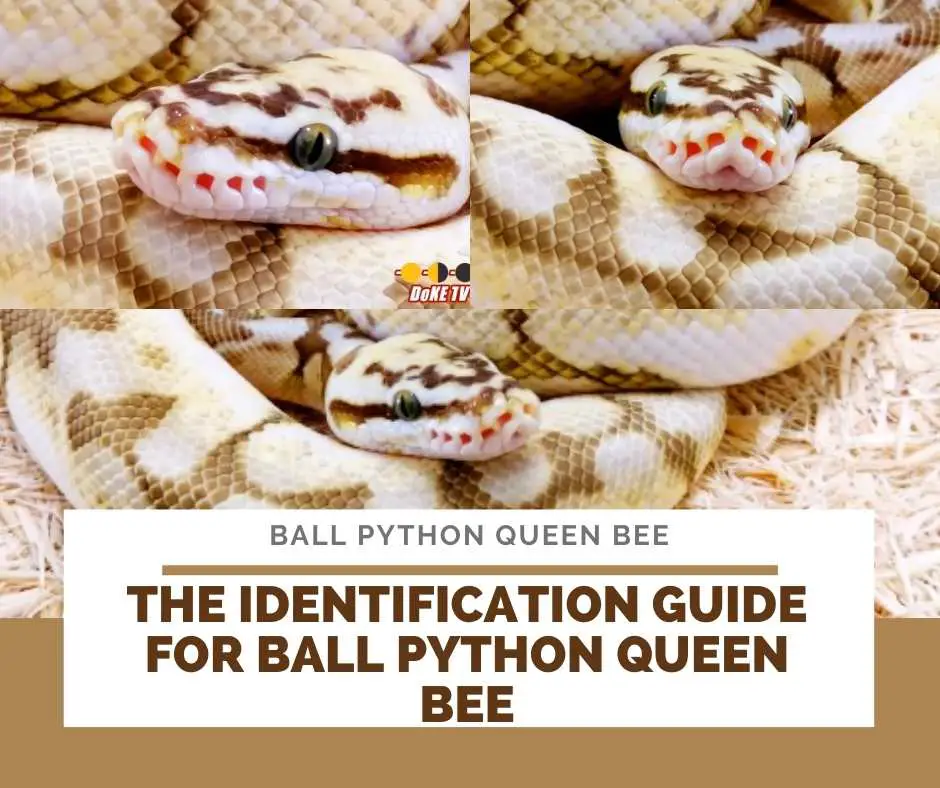
(Image Source: Daylitor Knight Tao YouTube)
The task of identifying a morph of ball pythons is quite challenging. Because there are so many ball python morphs you would find out there with patterns and colors that resemble one another.
And as the year goes by, more colorful and attractive morphs are produced by breeders who intentionally inter-bred them. So to make identifying them easy for you, you’ll need to know a bit about their colors generally and patterns both in the wild and in captivity.
In this section, we will expose you to techniques to identify a ball python queen bee. Note that the techniques to be discussed in this section isn’t limited to only queen bees.
It can be applied to identify any other type of ball python morph. Having said that, to identify the exact ball python morph irrespective of the type that you have as a pet, here are what to check:
Patterning
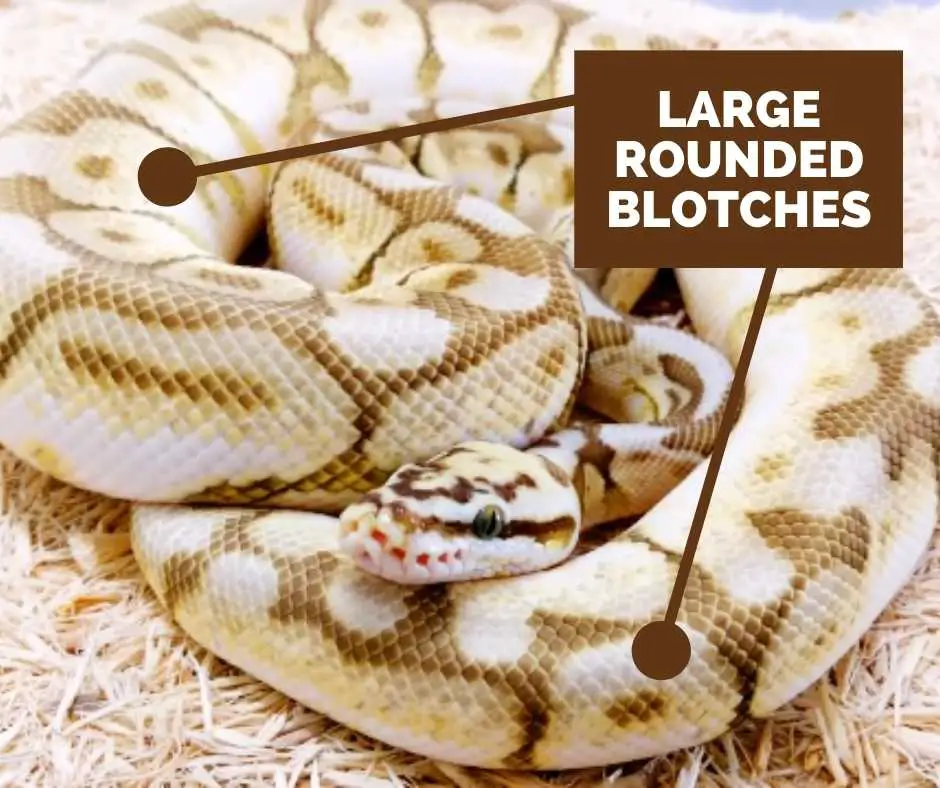
(Image Source: Daylitor Knight Tao YouTube)
Normally, ball pythons are black (that is they have dark backs and dark upper heads). This is what you’ll see in the wild in regions where they are native to. On the sides, they have large, pale-looking rounded blotches. These blotches are evenly spaced from the neck down to the body and tail.
These blotches are usually open on the bottom and are normally connected to a much pale-looking belly coloration. Also connected to the dark back, the blotches are separated by vertical dark interspaces.
On each pale lateral blotch, you may see one or two small dark spots in the upper section of the blotch. However, the activity of cross-breeding has brought about variance and even more colorful and attractive ball pythons. The queen bee is a typical example.
The queen bee has a faded or pale-looking brown back and head with a white belly. On the sides, it has large faded rounded blotches. The blotches are evenly spaced along the entire body. Starting from the neck down to the body and tail.
The blotches of queen bees are separated by very thin vertical faded interspaces. These interspaces are connected to the faded brown backs.
Color Of Eyes And Head
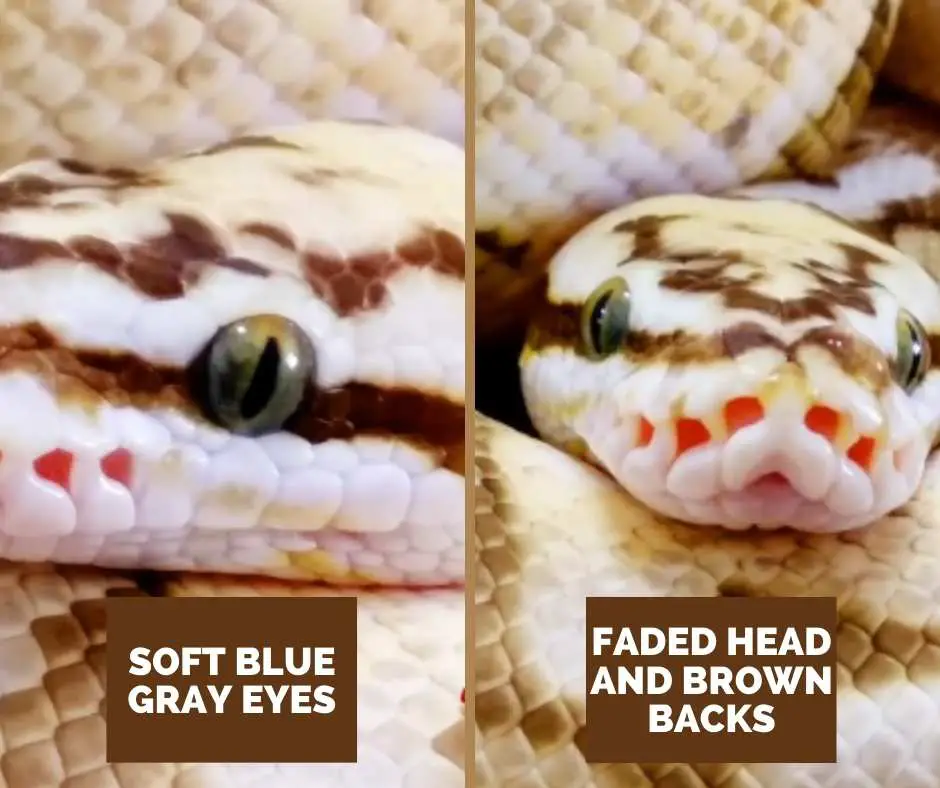
(Image Source: Daylitor Knight Tao YouTube)
Looking at the color of the eyes and head isn’t entirely a reliable way to identify ball python morphs. This is because two different morphs of the same gene line have the same eye or head color.
However, there are slight insignificant differences that can help to spot the difference. Queen bees being pastel have a faded or reduced head color with soft blue-gray eyes.
The Entire Body Color or Base Color

(Image Source: Daylitor Knight Tao YouTube)
This is the most reliable way to identify a ball python morph. By its base color or the color that is more pronounced and spread across the entire body.
Ball pythons generally come in a variety of colors ranging from yellow to brown, black, white, and many more. Besides, no two ball python morphs have the same shade of color no matter the resemblance between them.
The queen bees have an overall white bellies and sides with thin reduced dark-brown markings.
Blushing
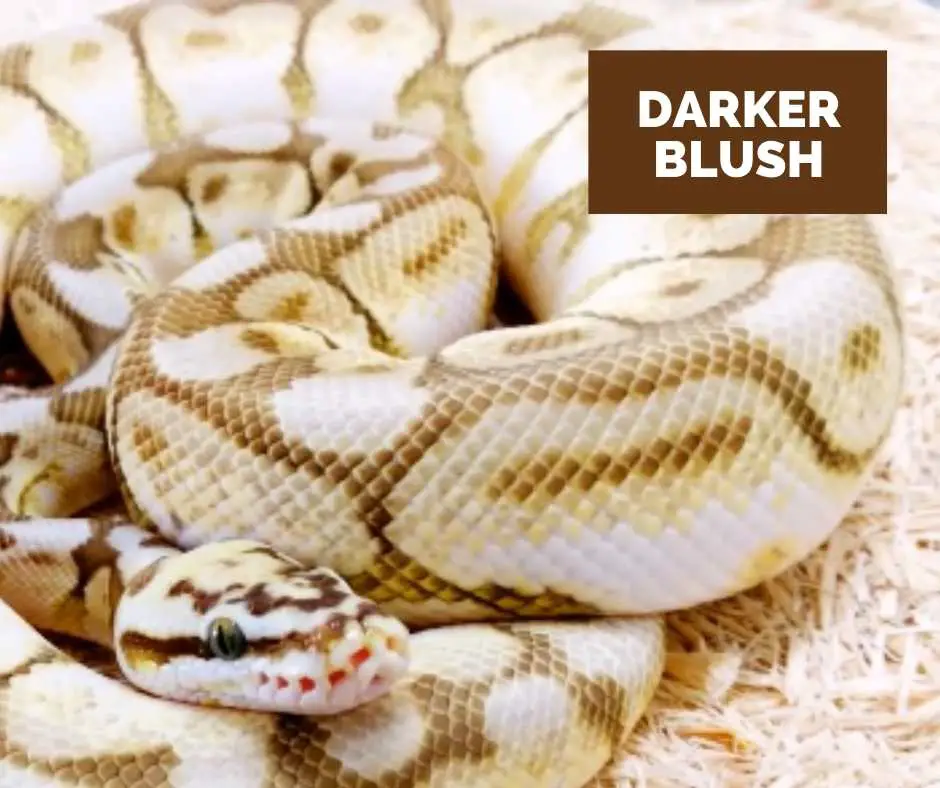
(Image Source: Daylitor Knight Tao YouTube)
This too can help to tell what morph of ball python you have. But first, let’s explain what blushing is. Blushing in ball pythons is used to mean the change in the color of the pigments that run down the spine.
This can appear either darker or lighter than the surrounding colors, and the same coloring can be seen on the head. While some morphs such as the fire bees and killer bees do not have it, in the case of queen bees, they have a darker blush than their surrounding white bodies.
All these grammar may still sound complicated. What you can see in real life is easier to understand. This short video will help you understand better the above expectation.
Can I Have A Ball Python Queen Bee As Pet?
An emphatic yes. The fact that they are calm and non-venomous snakes cannot be overemphasized. As a result, they make good pets to any level of herpetologist who has an interest in keeping snakes as pets.
They are quite docile and easy to care for. If you enjoy playing with your pet snakes, you’ll certainly like the company of these beautiful pythons curling around your neck.
So, if they make such a bunch of lovely pets, where can you get a healthy queen bee? Let’s delve into that in detail.
Where To Buy Queen Bee Ball Pythons
Unlike three to five decades ago where ball pythons were not commonly seen as pets. They were not only expensive but difficult to get. Now they are one of the most common pet snakes and can be found at various online reptile markets and pet stores.
With the increasing number of online reptile suppliers and pet stores, you will find it tasking to know where exactly to get healthy ball pythons. Let’s look at some of these suppliers that you can confidently purchase queen bees from.
Morphmarket
This supplier is not just popular but has a long-standing reputation in selling healthy and vibrant reptiles. They are a community of experienced breeders who specialized in breeding reptiles of all sorts.
They operate from three major regions in the world (the United States, Europe, and South Africa), but will ship to anywhere. Check them out here.
XYZ Reptiles
This online reptile vendor is another place you can buy healthy queen bee ball pythons. One remarkable thing about XYZ Reptiles is that their reptiles are almost at give-away prices.
They offer much cheaper reptiles than other pet dealers. The queen bee ball python is sold here for $299 you can check them out here.
What about a place where you get a healthy pet of your choice and learn everything about how to care for that pet? BHB Reptiles make that possible.
They are not quite old in the reptile market like its competitors, but they are great at providing healthy reptiles with good customer service. Their prices are competitive as well.
Big apple Herp also sells quality snakes. They are a reputable and certified online reptile supplier in the United State. Our focus queen bee is sold for $269 on this platform.
How Much Do Queen Bees Cost?
Normal looking ball pythons are beautiful, but not as beautiful and desirable as the designer morphs. While a normal-looking ball python is sold for as low as $40, designer morphs like the queen bee will sell for a much higher price.
However, this alone is not the price-determining factor. The price of designer morphs though higher will vary depending on which vendor you buy it from. On the whole, being that queen bees are a result of cross-breeding three co-dominant genes, they range in price between $280 to $600.
This is because they have the physical characteristics of the three-component co-dominant genes. Note that this price is without the normal shipping fee if you’re buying it online.
Accessories You Need To Own A Ball Python
We all know that ball pythons have low maintenance cost. But it’ll still cost you some hundreds to thousands of dollars to keep them, especially the initial cost.
For you to give them a perfect habitat similar to the wild, you’ll need to provide all the necessary accessories. Each of these accessories plays a vital role in their health and well-being. The accessories needed include:
Hides
Hides are needed for their safety and security. Do not wonder too much why captive ball pythons will need safety. In the wild, since they are nocturnal animals, all they do is hide during the day and come out hunting during the night.
So in captivity, they’ll need hides as well to live a normal life as though in the wild. Two hides are usually recommended for captive ball pythons. Each on either end of the enclosure (the cool end and the hot end).
This is to allow them to regulate their body temperature as the need arises since they are cold-blooded.
Water Dish
Another important accessory to be provided is the water dish. Considering that they are large and heavy snakes, their water dish should be a large and heavy one. This is to ensure that they do not pour out the water on their enclosure while soaking or drinking.
Thick Branches or Logs
If you’re having a female queen bee ball python as a pet, you may not need this because the females are not natural climbers. But for the males, IT IS A MUST HAVE in their enclosure.
Just ensure that whatever climbing material you provide is sturdy enough to avoid slipping over, and injuring your snakes.
Cage Decorations, Backgrounds or Backdrops
An open glass enclosure that doesn’t have vegetation to shade it to near darkness will make your snakes feel insecure. Once they are not having that feeling of security, it’ll constitute stress to them.
This is one of the reasons they would refuse to eat. So to eliminate stress, provide backgrounds to their enclosure. The type that will simulate their natural habitat.
What Do Ball Pythons Eat?
First, let’s understand what their diet is like in the wild. In their natural habitat, ball pythons survive by feeding on small rodents and birds.
What the males eat is quite different from what females feed on. In the wild, female ball pythons are floor dwellers. They don’t climb that much like the males. In that case, they prey on small floor dwelling animals such as rats, mice, shrews, and many others.
The males who are arboreal prey more on birds. In general, their diet consists of mice, rats, lizards, other small snakes, amphibians, and other small rodents. In captivity, due to availability, they are fed different sizes of rats and mice.
Some breeders do offer their snake other foods apart from rats and mice. Their food in captivity Is recommended frozen-thawed and warmed to at least above room temperature.
Facts Of Ball Python Queen Bee
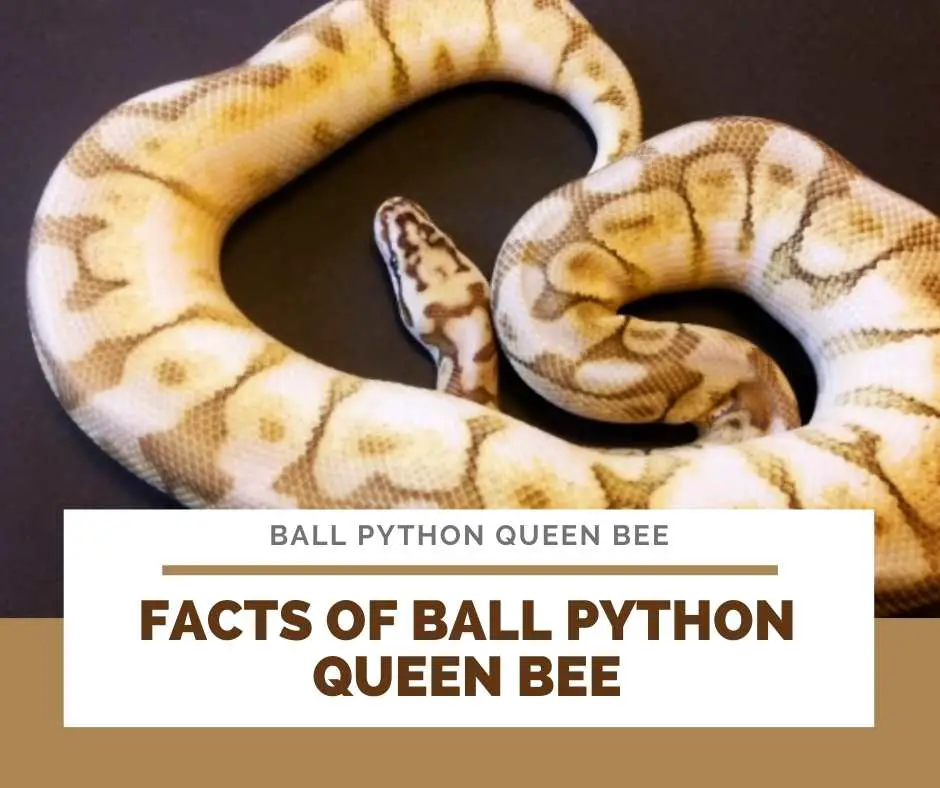
(Image Source: Daylitor Knight Tao YouTube)
How well do you know this ball python morph called queen bees or ball pythons as a whole? Let’s tell you some interesting facts about them.
- They Are 3 Gene Combo: The first interesting fact about queen bees is that they are a product of cross-breeding three co-dominant genes. This means that the physical characteristics of the three-component genes can be seen evidently in queen bees.
- Queen bee ball pythons like every other morph reach adulthood in three years. So they would need a bigger size enclosure prior to that time.
- They are constrictors: In the wild, they eat pre-killed rodents. So in captivity, they can’t resist frozen-thawed and warm rodents.
- Another interesting fact about queen bees is that, as they are about to shed, their eyes usually turn to a milky, blue-gray. Their overall white body also becomes dull during this period.
- They aren’t known to be fussy eaters. But this fact might vary with snakes.
What Are The Common Health Issues Of A Queen Bee Ball Python That I Need To Know?
Like with every other living creature, ball pythons do get sick of one or two underlying diseases. Once this happens, you may not easily notice it. Because by natural instincts your pet snake will try to hide symptoms of illness.
This behavior in the wild helps them to escape from predators or impending danger. In the wild, they would simply pretend to be active or even venomous, even though they are sick. The idea is not to show their sickness or weakness to their predators.
For your pet snakes, you’ll need to know the kind of diseases that can affect them in captivity, the symptoms, and how to check for these diseases.
However, as a rule of thumb, a weekly record of their weight, and careful monitoring of other behaviors like shedding and feeding habits IS A MUST. This will help you to notice in time when something serious or abnormal is going on with your snakes.
Therefore, a significant weight loss within a short time or poor shedding should tell you that something isn’t right. And the root cause should be found and the solution given outrightly. Having established that, let’s look into some of the common diseases in detail.
Pneumonia In Snakes (Respiratory Infections)
It is common to have herpetologists report of their pet snakes having “Respiratory Infection”. This is used to refer to any disease that involves the airways, nasal cavity, or the lungs.
Symptoms of this disease can range from a minor stuffy nose to a very serious pneumonia. But some keepers only happen to find out when the illness might have exacerbated to advanced pneumonia.
This disease in snakes can occur anywhere around the nostrils, the trachea, the lungs, or the air sacs. Since snakes do not have diaphragms that they can cough with, if their lungs get filled with fluid, they’ll find it difficult breathing.
This disease is caused majorly by poor husbandry. That is high humidity levels in the enclosure or too cold or damp habitat. Other causes include lung mites, internal parasites, and lack of vitamin A.
Symptoms
- A discharge from the nose.
- Breathing difficulty. Breathing with the mouth open and gasping for air.
Mouth Rot or Infectious Stomatitis
Mouth rot in snakes is not a disease on its own but a result of an underlying serious disease. It is a condition where the gums and teeth get rotten or decayed. It is often caused by a poor immune system, stress, and other factors related to poor husbandry.
If detected earlier, this ailment can be treated. To be on the safe side with your snakes, regular physical examination is mandatory.
Symptoms
- Loss of teeth.
- Loss of appetite.
- A white, cheesy substance in the mouth.
Retained Eye Cap (Dysecdysis)
Poor shedding or retained eye caps is a health problem caused by poor husbandry. It is basically a result of inappropriate humidity levels. It is as well one of the most common health issues in captive snakes.
As one shed cycle is completed, another cycle begins. So if you’re not providing your snakes the right habitat, you should be prepared to deal with a retained shed almost every 2 months.
Acariasis (Mites And Ticks Infestation)
These tiny little parasites should not for any reason be taken for granted. Aside from causing discomfort to your pet snakes, they are vectors of diseases.
And if you’re a full-time herpetologist breeding different other reptiles, they can spread diseases to other animals like wildfire. But if detected earlier can be treated with disinfectants.
Note that any pet disinfectants, although it will kill the mites and ticks are not good for your snakes. Since these parasites are often caused by poor husbandry, unclean enclosure, and acquisition of new cage accessories, ensure that these causal factors are eliminated.
Other common health issues in captive ball pythons include loss of appetite, dehydration, dermatitis, regurgitation, and many others. In a nutshell, the list of these common health issues in ball pythons cannot be covered in this article. For further reading on this subject matter visit here.
Final Notes
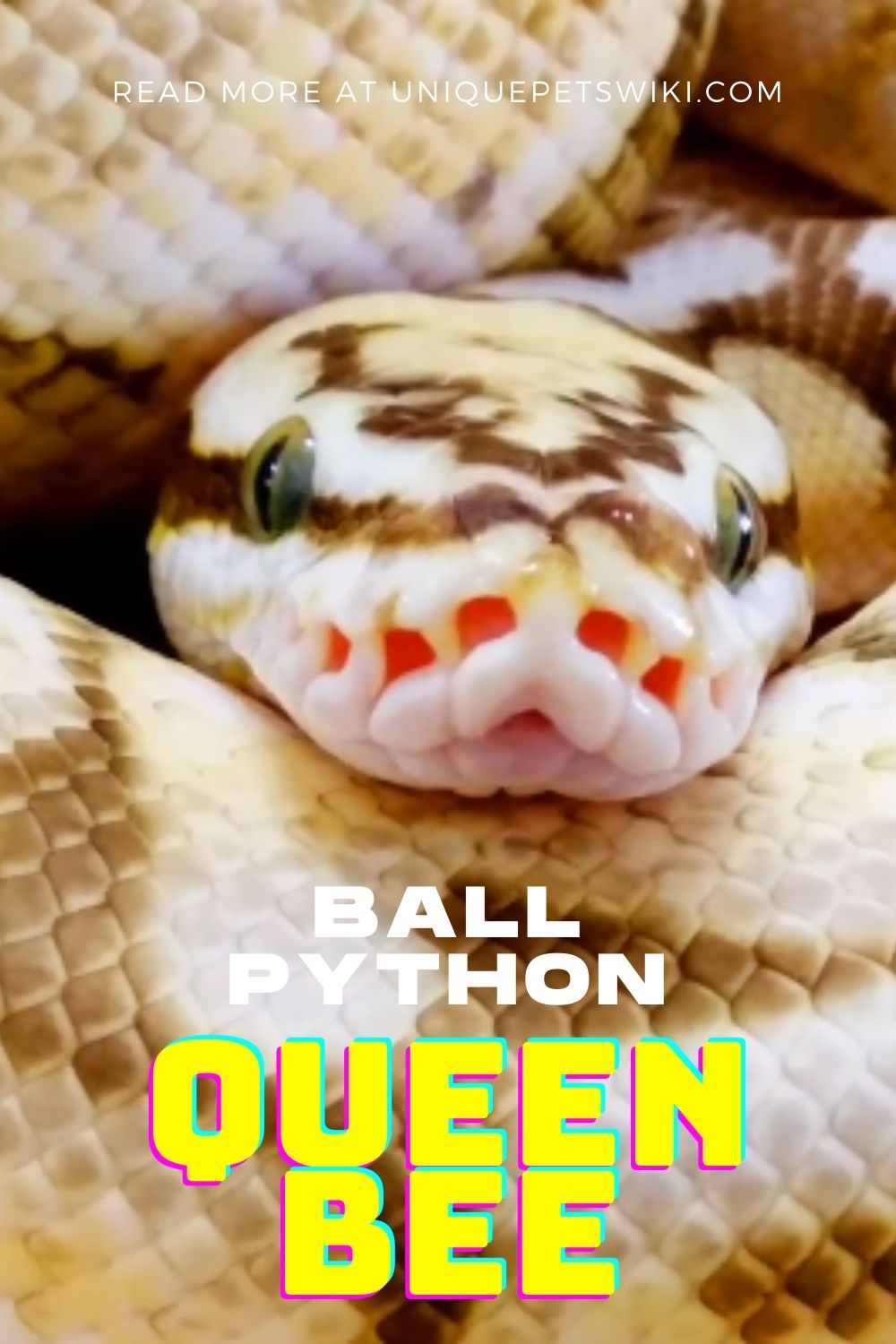
The three gene combo queen bees are pretty colorful morphs that reptile enthusiasts pick interest on. And because of their strong genetic makeup, they can be cross-bred with a normal gene or other genes to create even more stunning morphs.
But cross-breeding them isn’t recommended. This is because it may result in a morph with wobbles. To avoid such incidents, it’ll require thorough research and calculation.
As a matter of fact, cross-breeding always takes a rigorous process. So you have to be ready for it if you want to experiment.
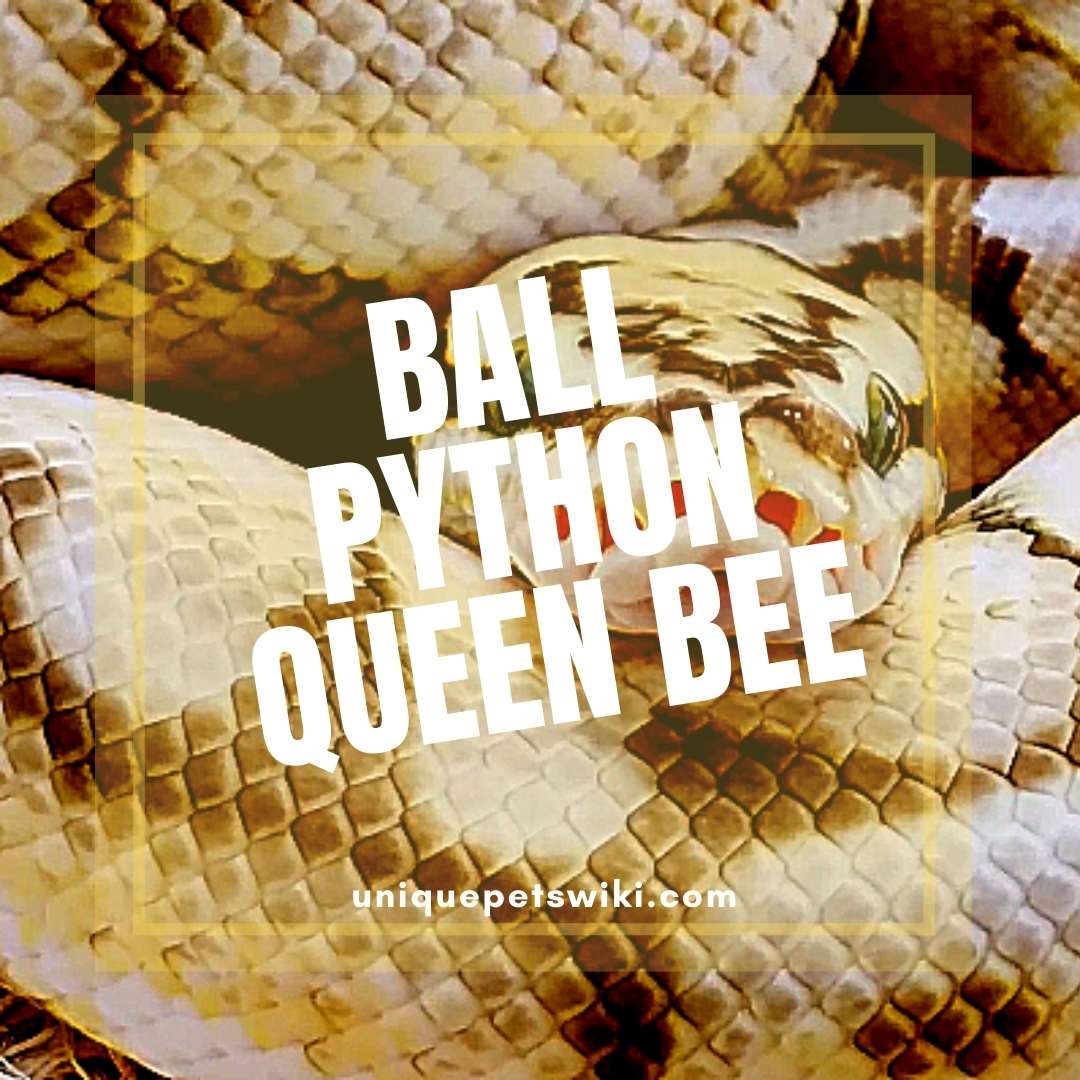
I have been so afraid of all kinds of snakes my whole life. That was until my dream I had this morning. In the dream I was told to look that there was a Queen Bee. I looked up to see a beautiful snake. I was still very much afraid but curious enough to stay so I could get a closer look, in my dream of course. After reading what you had to say about the Ball Python Queen Bee I’m not so much afraid anymore. I’m going to read more about these beautiful snakes. Thank you!
Haha, nice to hear that Missy.